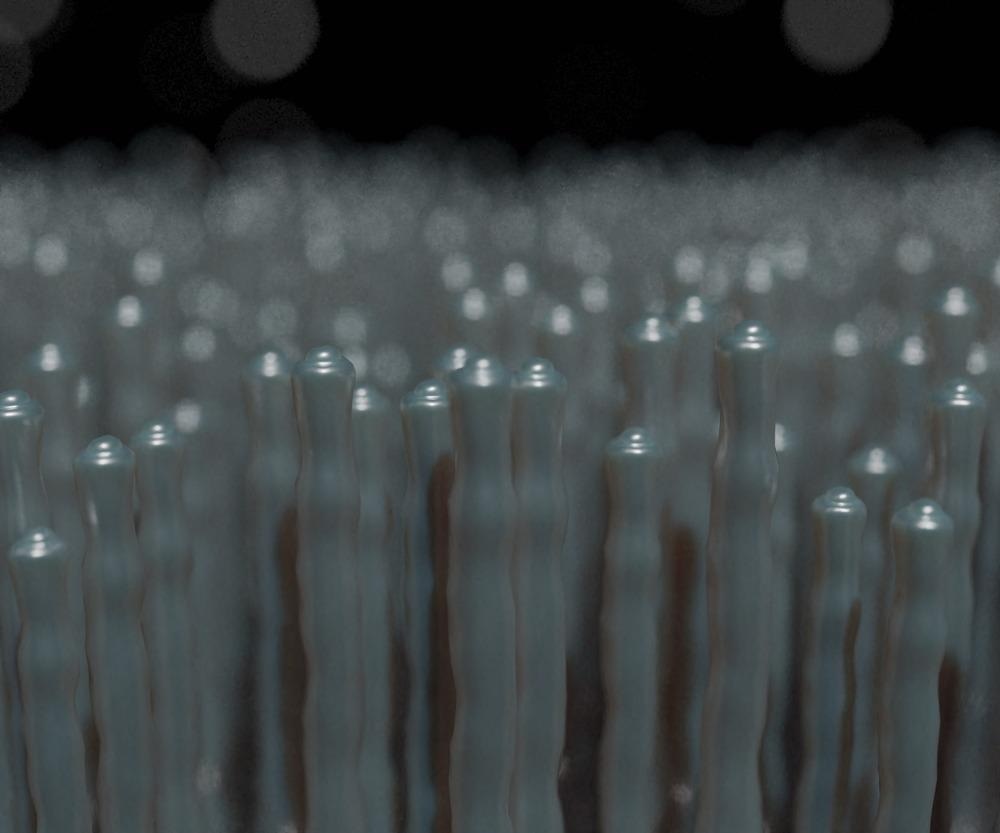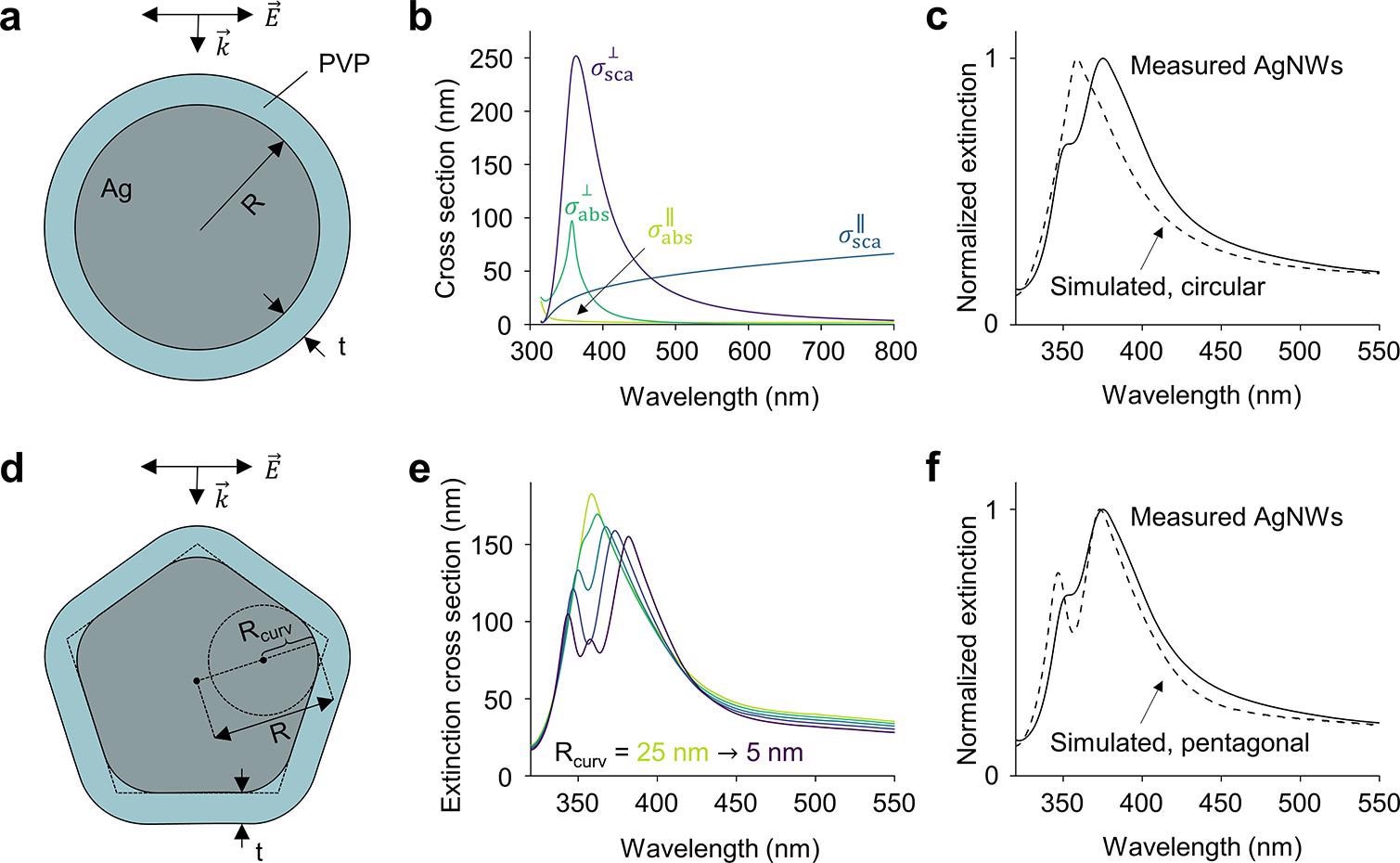Although colloidal production of silver nanowires (Ag NWs) produces nanostructures with twinned pentagon architectures, their optical characteristics are often approximated using a cylinder cross-section. In an article published in The Journal of Physical Chemistry C, the electrical and optical responses of twinned pentagonal AgNWs and NW networks were computationally estimated to illustrate the advantages and limits of such an approach.

Study: Optical Properties of Colloidal Silver Nanowires. Image Credit: Love Employee/Shutterstock.com
Optimizing Dimensions of Silver Nanowires for a Myriad of Applications
Silver nanowires (AgNWs) and nanowire (NW) networks exhibit significant optical transparency in the visible spectrum as well as excellent electric conductance. Such properties provide them great appeal for various uses, including strain, temperature, pressure detectors, transparent electrodes, Raman spectroscopy precursors, and catalytic reactions.
Since their electrical and optical characteristics are greatly influenced by their scale and form, it is critical to match their parameters according to the desired purpose. Computational models can estimate the optical performance of AgNWs, guiding the development of NW-based optoelectronics.
Approximating Silver Nanowires to Endlessly Long Cylinders
Typically, the cross-sections for optical extinction of AgNWs are approximated by applying Mie theory which approximates them to endlessly long cylindrical tubes or ellipsoids. Analytical formulations to Maxwell's equations appear as Mie theory for indefinitely long cylinders, allowing us to divide the extinction spectra into dipolar and higher-order components.
The most common technique of producing silver nanowires, known as polyol synthesis, results in NWs with pentagon-shaped cross-sections and curved corners.
Owing to the discrepancy in simulation and synthesis structures, extinction spectra are predicted that may be erroneous and could lack important optical characteristics. Furthermore, the distribution and strength of the dispersed electric fields around the NWs, known as near-fields, are reliant on the shape as well.
Adopting suitable geometric representations of NWs is critical for all implementations that depend on precise near-field forecasting, like photocatalysis, optical detection, and surface-enhanced Raman scattering (SERS).
Using Networks of Nanowires as Transparent Electrodes
Silver nanowire networks may be employed as transparent electrodes for touch screen displays, smart windows, photovoltaic cells, and OLEDs due to their plasmonic resonance outside of the visible spectrum and excellent electric conductance. For such purposes, a low extinction in the visible spectrum is needed while maintaining a good network conductance.
When the diameter of the nanowire is reduced, a blue shift of the transverse plasmonic resonance is noticed, as well as a thinning of the peak. This blue shift into the ultraviolet portion of the band validates the requirement for narrower NWs for usage in transparent electrodes.

Optical response of infinitely long silver nanowires with circular and pentagonal cross-sections. (a) Illustration of a circular infinite nanowire of radius R surrounded by a PVP layer of thickness t under perpendicular illumination. (b) Simulated scattering and absorption cross-sections under parallel and perpendicular illumination for a circular infinite nanowire with R = 25 nm and t = 5 nm. (c) Comparison between the simulated (dashed) extinction spectrum of a circular infinite nanowire and the one measured experimentally for 25 nm radius PVP-stabilized AgNWs in water (solid). (31) The simulated extinction cross-section is obtained by averaging over the two incoming parallel and perpendicular polarizations shown in panel b. (d) Illustration of a pentagonal infinite nanowire of radius R and radius of curvature Rcurv. (e) Simulated extinction cross-sections of pentagonal infinite nanowires with R = 25 nm and Rcurv varying from 25 nm (green) to 5 nm (purple) in steps of 5 nm. The cross-sections are averaged over the two incoming polarizations E⃗∥ and E⃗⊥. (f) Comparison between the simulated (dashed) extinction spectrum of a pentagonal infinite nanowire (Rcurv = 10 nm) with the experimental one shown also in panel c (solid). © Hamans, R. F., Parente, M., Garcia-Etxarri, A., & Baldi, A. (2022).
Using Nanowires for Near-Field Platforms
While the geometric dimensions of a silver nanowire network are more vital compared to its form, the spatial distribution and strength of the electrical field surrounding the wire are predicted to be heavily reliant on the cross-sectional area of the NW and the curvature of its edges.
Consequently, when predicting the effectiveness of silver nanowires for uses where the strength of the electrical field is a crucial parameter, it is critical to approximate the correct geometry. It is also important to comprehend which optical mechanisms are reinforced by the silver nanowire and their contribution to near-field distribution and intensity.
Important Takeaways of the Study
In this study, the light dispersion, absorbance, and extinction of silver nanowires with realistic pentagon-shaped cross-sectional areas were calculated using a finite difference time domain (FDTD) approach. All major properties found through experiments for colloidally generated NWs were accurately reproduced by the simulated extinction spectra. The team investigated the variation of optical characteristics of silver nanowires depending on their cross-sectional shape.
The distinctive twin extinction peak of colloidal silver nanowires was shown to be a definite identifier of a pentagon-shaped cross-section. It was also shown that the specific peak shape is very structurally dependent on the curvature of the sides, which is a key structural element for properly simulating near-fields.
When modeling silver nanowires for transparent electrode use, a simple cylinder-shaped approximation is adequate to simulate NW networks' electrical and optical behavior. The findings of this study may be used to evaluate the productivity of silver nanowire syntheses, as well as to choose the appropriate NW diameters for optimizing detection and enhancement effects for purposes like Raman spectroscopy.
Reference
Hamans, R. F., Parente, M., Garcia-Etxarri, A., & Baldi, A. (2022). Optical Properties of Colloidal Silver Nanowires. The Journal of Physical Chemistry C. Available at: https://doi.org/10.1021/acs.jpcc.2c01251
Disclaimer: The views expressed here are those of the author expressed in their private capacity and do not necessarily represent the views of AZoM.com Limited T/A AZoNetwork the owner and operator of this website. This disclaimer forms part of the Terms and conditions of use of this website.